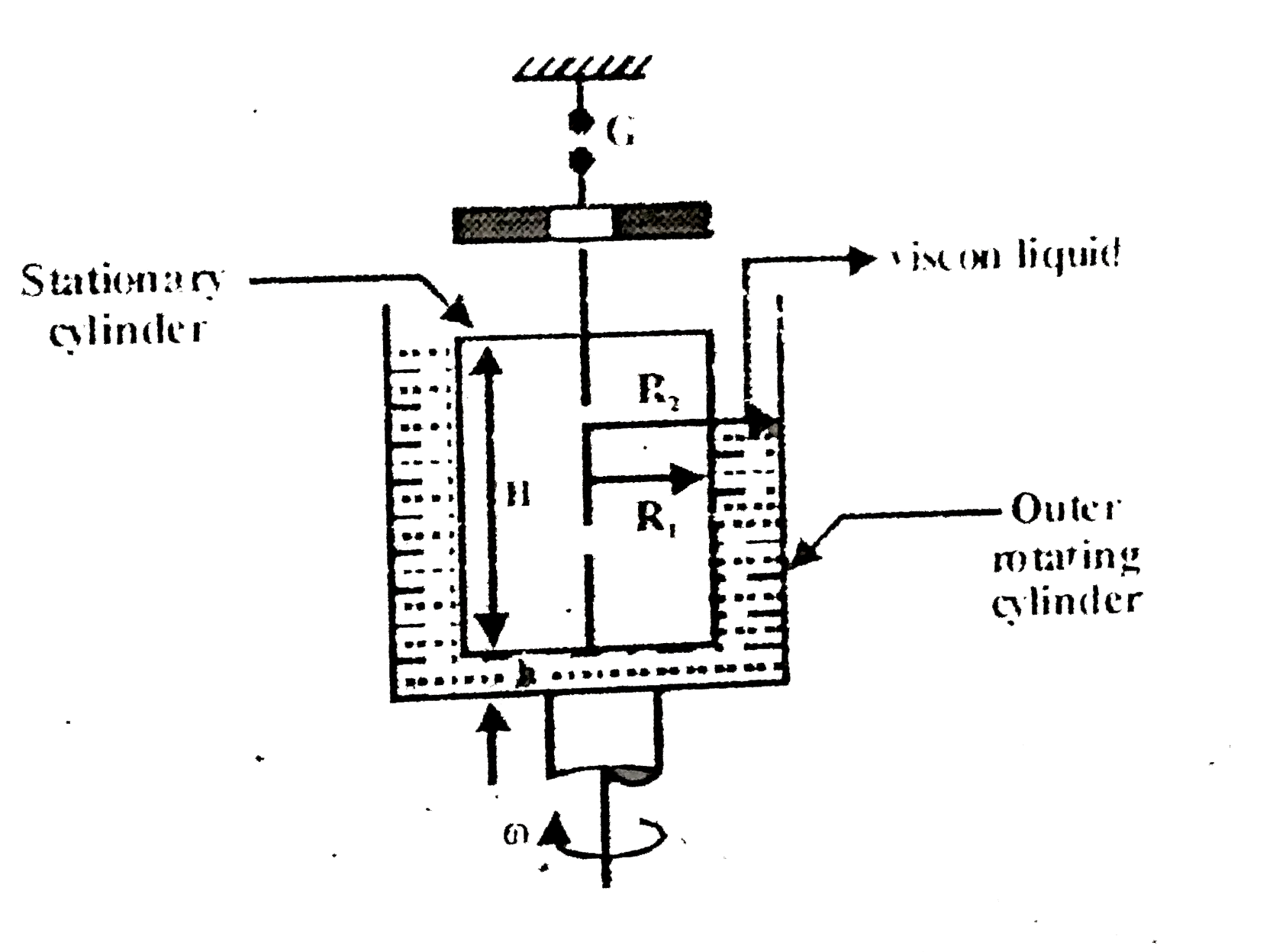
There are two concentric cylinders of radii R1 and R2 as shown. The narrow space between the two cylinders is filled with liquid of viscosity μ. The inner cylinder is held stationary by means of a torsional spring of stiffness G. the outer cylinder is rotated with constant angular speed ω. The torque acting on the inner cylinder due to shearing action of thhe liquid:
πμωR42h+2πμωHR21R2R2−R1
πμωHR21R2R2−R1
πμωHR21R2R2−R1+μωR43h
πμωR42h
The correct Answer is:A
The torque due to liquid in annular space is
(2πR1H)×μ(ωR2R2−R1)×R1
where velocity gradient =ωR2R2−R1
Also torque due to liquid in between space in botto of thickness 'h'
R1∫0(x)(2πxdx).ωxh=πμωR42h
Similar Questions
A long, hollow insulating cylinder of radius R and negligible thickness has a uniform surface charge density σ. The cylinder rotates about its central axis at a constant angular speed ω. Choose the correct option(s):
View SolutionA metallic spherical shell of radius r1 is surrounded by another concentric metallic spherical shell of radius r2. The space between the two shells is filled with a dielectric of dielectric constant K. If a charge Q is given to the inner shell, the charge appearing on the outer surface of the outer shell is
View Solution
Knowledge Check
- Question 1 - Select One
Space between tow concentric spheres of radii r1andr2 such that r1<r2 is filled with a material of resistivity ρ. Find the resistance between inner and outer surface of the material
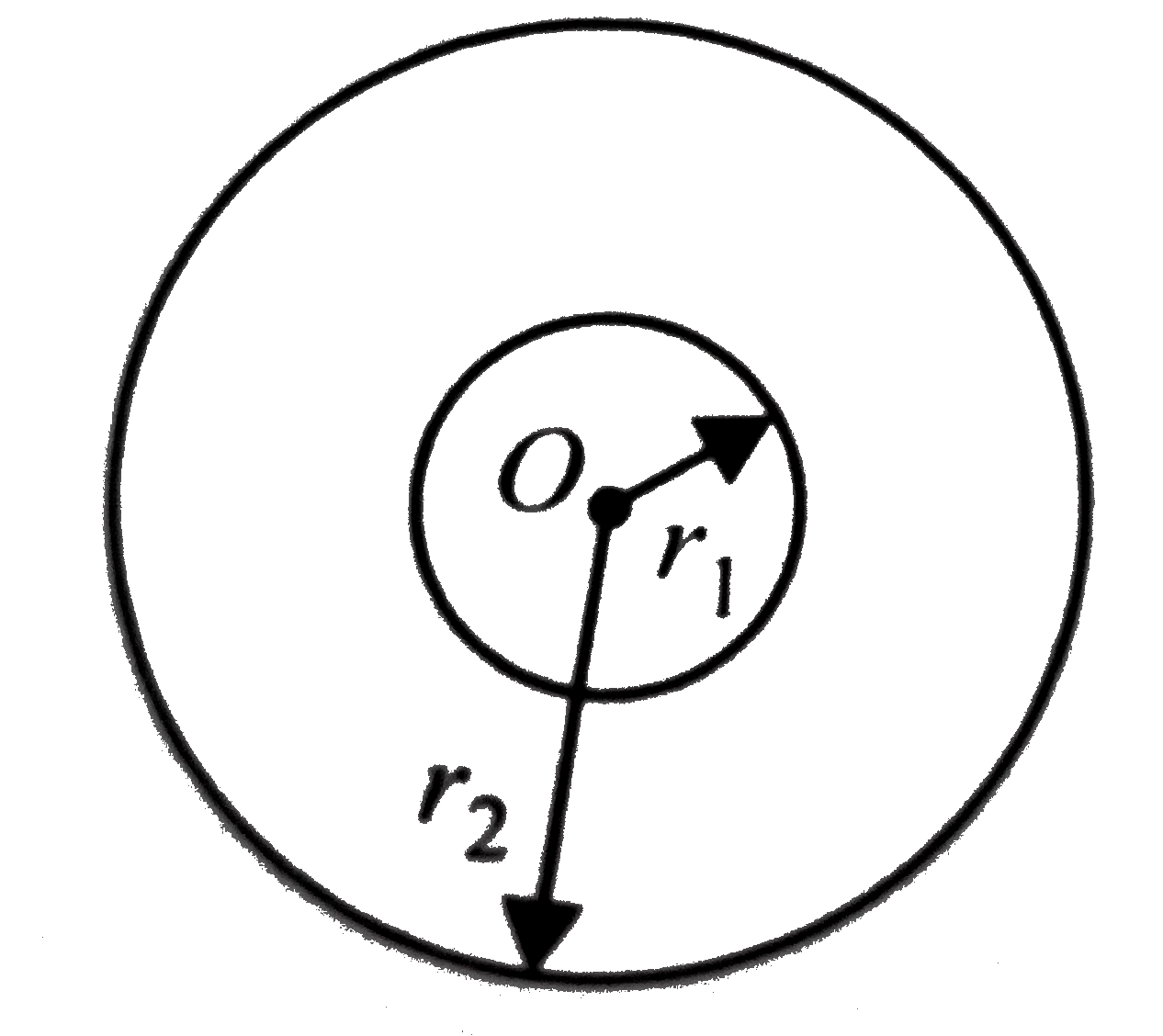 Ar1r2p2Br2−r1r1r2p4πCr1r2r2−r1p4πDnone of these.
Ar1r2p2Br2−r1r1r2p4πCr1r2r2−r1p4πDnone of these.
A solid cylinder of mass m length L and radius R is suspended by means of two ropes of length l each as shown. Find the time period of small angular oscillations of the cylinder about its axis AA'
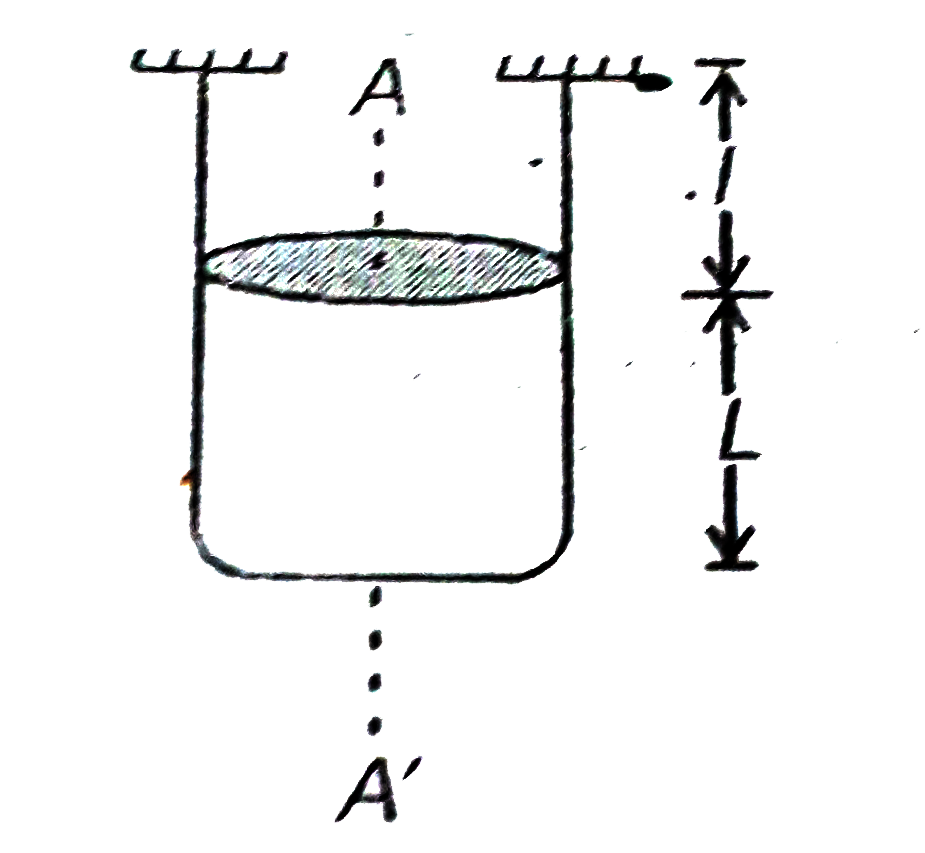 View Solution
View SolutionPassage XIV) A uniform cylindrical block of mass 2M and cross-sectional area A remains partially submerged in a non viscous liquid of density ρ, density of the material of the cylinder is 3ρ. The cylinder is connected to lower end of the tank by means of a light spring of spring constant K. The other end of the cylinder is connected to anotehr block of mass M by means of a light inextensible sting as shown in the figure. The pulleys shown are massless and frictionless and assume that the cross-section of the cylinder is very small in comparison to that of the tank. Under equilibrium conditions, half of the cylinder is submerged. [given that cylinder always remains partially immersed)
Under equilibrium conditions
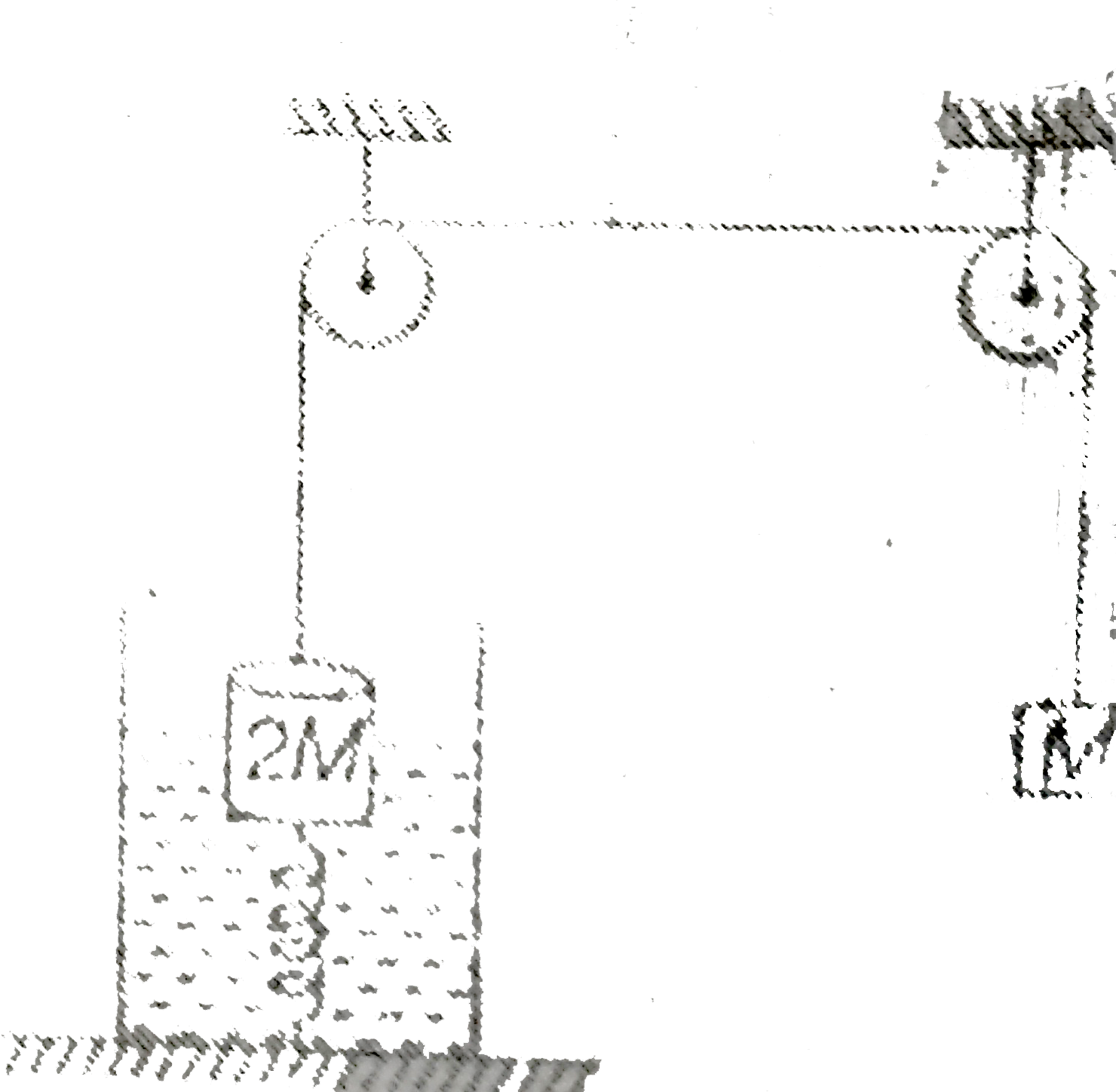 View Solution
View SolutionTwo conducting cylinders of equal length but different radii are connected in series between two heat baths kept at temperatures T1=300KandT2=100K, as shown in the figure. The radius of the bigger cylinder is twice that of the smaller one and the thermal conductivities of the materials of the smaller and the larger cylinders are K1andK2 respectively. If the temperature at the junction of the two cylinders in the steady state is 200 K, then K1/K2=__________.
View SolutionIn a gravity free space, a hollow cylinder of radius 4R and mass M is being rotated by a constant angular velocity ω clockwise w.r.t. an inertial frame of reference. Another hollow cylinder of radius R and mass m is rotating inside this cylinder, such that it touches the inner surface of larger cylinder without slipping and its centre of mass appears stationery from inertial frame Dynamic friction coefficient between cylinders is μ. If the normal reaction between cylinders is denoted by N, answer the following questions.
What is the angular velocity of smaller cylinder.
 View Solution
View SolutionTwo cylinders having radii 2R and R and moment of inertia 4I and I about their central axes are supported by axles perpendicular to their planes. The large cylinder is initially rotating clockwise with angular velocity ω0. The small cylinder is moved to the right until it touches the large cylinder and is caused to rotate by the frictional force between the two. Eventually slipping ceases and the two cylinders rotate at constant rates in opposite directions. During this
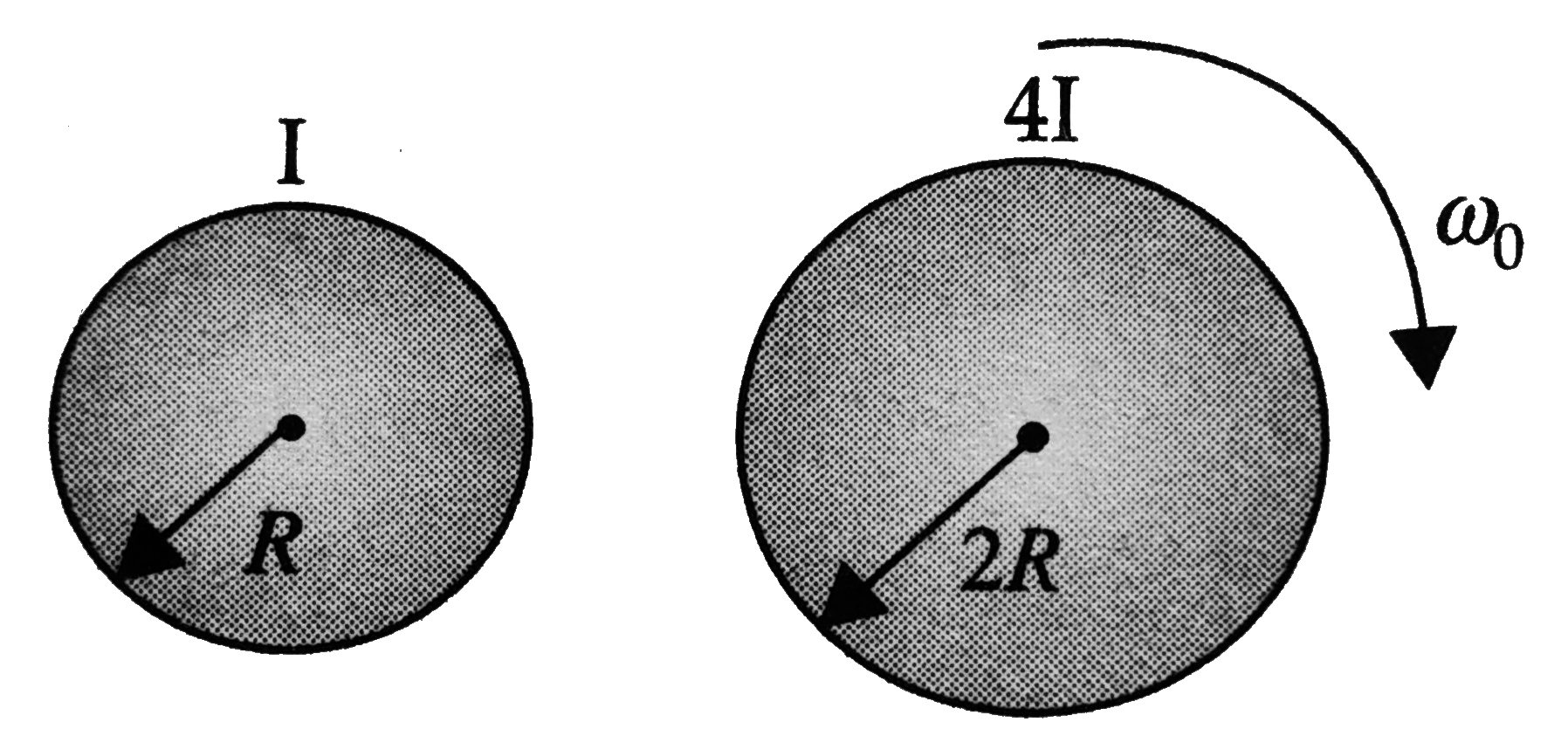 View Solution
View SolutionIn a gravity free space, a hollow cylinder of radius 4R and mass M is being rotated by a constant angular velocity ω clockwise w.r.t. an inertial frame of reference. Another hollow cylinder of radius R and mass m is rotating inside this cylinder, such that it touches the inner surface of larger cylinder without slipping and its centre of mass appears stationery from inertial frame Dynamic friction coefficient between cylinders is μ. If the normal reaction between cylinders is denoted by N, answer the following questions.
What is the value of N
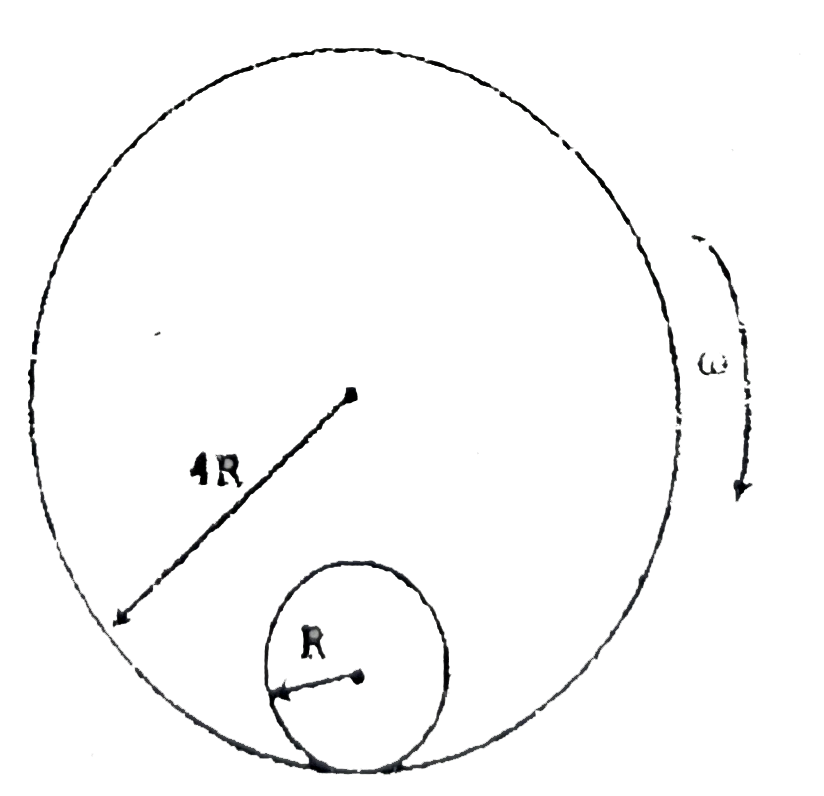 View Solution
View SolutionTwo cylinders having radii 2R and R and moment of inertia 4I and I about their central axes are supported by axles perpendicular to their planes. The large cylinder is initially rotating clockwise with angular velocity ω0. The small cylinder is moved to the right until it touches the large cylinder and is caused to rotate by the frictional force between the two. Eventually slipping ceases and the two cylinders rotate at constant rates in opposite directions. During this
(A) angular momentum of system is conserved
(B) kinetic energy is conserved
(C neither the angular momentum nor the kinetic energy is conserved
(D) both the angular momentum and kinetic energy are conserved
 View Solution
View Solution

